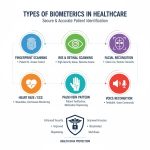Agricultural Enzymes Market: Transforming Modern Agriculture Through Biotechnology
Overview of Agricultural Enzymes Market
The agricultural enzymes market represents a revolutionary segment within the biotechnology industry, focusing on the development and application of specialized bioactive proteins designed to enhance agricultural productivity and sustainability. These sophisticated biological catalysts play a crucial role in improving crop yields, enhancing soil health, and providing natural protection against various agricultural challenges. Agricultural enzymes encompass a diverse range of products including proteases, cellulases, amylases, and lipases, each serving specific functions in plant growth promotion, nutrient availability, and pest management. The market’s robust growth trajectory is primarily driven by increasing global food demand, rising awareness about sustainable farming practices, and the growing adoption of precision agriculture technologies. Additionally, the shift toward organic farming methods and the need to reduce synthetic chemical inputs have created significant opportunities for enzyme-based solutions. The integration of biotechnology in agriculture has opened new avenues for farmers to optimize their operations while maintaining environmental sustainability, making agricultural enzymes an indispensable component of modern farming systems.
Get a Sample Copy:- https://www.vantagemarketresearch.com/agricultural-enzymes-market-1061/request-sample
Market Dynamics
The agricultural enzymes market operates within a complex ecosystem influenced by multiple interconnected factors that shape its growth trajectory and market penetration. The primary driving force behind this market’s expansion is the escalating global population, which demands increased food production efficiency without compromising environmental sustainability. This demographic pressure has intensified the need for innovative agricultural solutions that can maximize crop yields while minimizing resource consumption. Government initiatives promoting sustainable agriculture practices and providing subsidies for biotechnology adoption have created a favorable regulatory environment that encourages market growth. The increasing prevalence of soil degradation and declining agricultural productivity in traditional farming regions has further amplified the demand for enzyme-based solutions that can restore soil health and enhance nutrient cycling processes. Furthermore, the rising consumer awareness regarding food safety and quality has prompted agricultural producers to adopt cleaner production methods, positioning agricultural enzymes as preferred alternatives to synthetic chemicals. The market dynamics are also influenced by technological advancements in enzyme production and formulation, which have improved product efficacy and reduced manufacturing costs. Climate change impacts, including irregular weather patterns and increased pest pressures, have created additional market opportunities for enzyme solutions that can help crops adapt to changing environmental conditions.
Top Trends
The agricultural enzymes market is witnessing several transformative trends that are reshaping the industry landscape and driving innovation across multiple application segments. One of the most significant trends is the increasing integration of precision agriculture technologies with enzyme applications, enabling farmers to optimize enzyme usage based on real-time soil and crop conditions. This precision approach not only improves application efficiency but also reduces waste and enhances overall cost-effectiveness. Another prominent trend is the development of multi-functional enzyme formulations that can address multiple agricultural challenges simultaneously, such as combining soil enhancement properties with pest management capabilities. The market is also experiencing a surge in research and development activities focused on creating enzymes specifically tailored for different crop types and regional growing conditions. Biotechnology companies are increasingly investing in genetic engineering techniques to develop more robust and efficient enzyme variants that can withstand harsh environmental conditions and provide longer-lasting benefits. The trend toward organic and sustainable farming practices has accelerated the adoption of enzyme-based solutions as alternatives to synthetic fertilizers and pesticides. Additionally, the emergence of nanotechnology applications in enzyme delivery systems is creating new possibilities for targeted and controlled release formulations. The growing emphasis on circular economy principles in agriculture is driving the development of enzymes that can facilitate waste recycling and resource recovery processes.
Top Report Findings
- The global agricultural enzymes market is projected to experience remarkable growth, expanding from USD 581.3 Million in 2024 to USD 1501.2 Million by 2035, representing a compound annual growth rate of 9.00%.
- Soil treatment applications dominate the market share, accounting for the largest revenue segment due to increasing focus on soil health restoration and sustainable farming practices.
- Proteases represent the leading enzyme type segment, driven by their versatility in various agricultural applications including plant growth promotion and pest management.
- The cereals and grains crop segment holds the largest market share, reflecting the global importance of staple food production and the need for enhanced crop yields.
- North America currently leads the regional market, supported by advanced agricultural infrastructure and high adoption rates of biotechnology solutions.
- The organic farming segment is experiencing the fastest growth rate, driven by increasing consumer demand for organic produce and regulatory support for sustainable agriculture.
- Key market players are focusing on strategic partnerships and acquisitions to expand their product portfolios and geographic presence.
- Research and development investments are increasing significantly, with companies allocating substantial resources to develop next-generation enzyme formulations.
Challenges
The agricultural enzymes market faces several significant challenges that could potentially impact its growth trajectory and market penetration rates. One of the primary obstacles is the high initial cost associated with enzyme production and formulation, which can make these products less accessible to small-scale farmers and developing agricultural markets. The complex regulatory approval processes for biotechnology products create additional barriers to market entry, often requiring extensive testing and documentation that can delay product launches and increase development costs. Farmer education and awareness represent another critical challenge, as many agricultural producers lack sufficient knowledge about enzyme applications and benefits, leading to hesitant adoption rates. The stability and shelf-life limitations of certain enzyme formulations pose logistical challenges, particularly in regions with inadequate storage infrastructure and extreme climate conditions. Competition from established synthetic alternatives that may offer lower upfront costs continues to challenge market growth, despite the long-term benefits of enzyme solutions. Additionally, the lack of standardized application protocols and dosage recommendations can lead to inconsistent results, potentially undermining farmer confidence in enzyme-based products. Supply chain complexities and the need for specialized storage and handling requirements further complicate market distribution efforts.
Opportunities
The agricultural enzymes market presents numerous lucrative opportunities that could drive substantial growth and innovation in the coming years. The expanding global focus on sustainable agriculture practices creates a favorable environment for enzyme adoption, as governments and organizations worldwide implement policies promoting environmentally friendly farming methods. Emerging markets in Asia-Pacific, Latin America, and Africa offer significant growth potential due to increasing agricultural investments and rising awareness about biotechnology benefits. The development of customized enzyme solutions for specific crop types and regional conditions presents opportunities for market differentiation and premium pricing strategies. Integration with digital agriculture platforms and Internet of Things technologies could enhance enzyme application precision and monitoring capabilities, creating new value propositions for farmers. The growing trend toward vertical farming and controlled environment agriculture opens new application areas for specialized enzyme formulations designed for soilless cultivation systems. Partnerships with agricultural cooperatives and extension services could facilitate market penetration and farmer education initiatives. Additionally, the increasing emphasis on carbon sequestration and climate-smart agriculture practices positions enzyme solutions as valuable tools for achieving environmental sustainability goals while maintaining agricultural productivity.
Key Questions Answered in Agricultural Enzymes Market Report
- What are the primary factors driving the growth of the agricultural enzymes market globally?
- How do different enzyme types compare in terms of market share and application effectiveness?
- Which regional markets are expected to show the highest growth rates during the forecast period?
- What are the main challenges facing agricultural enzyme manufacturers in product development and commercialization?
- How do regulatory requirements vary across different regions and impact market entry strategies?
- What role do technological advancements play in shaping the future of agricultural enzyme applications?
- Which crop segments represent the most significant opportunities for enzyme market expansion?
- How are market players addressing the cost and accessibility challenges in developing markets?
- What are the key trends influencing consumer and farmer adoption of enzyme-based agricultural solutions?
- How do agricultural enzymes compare to traditional synthetic alternatives in terms of cost-effectiveness and environmental impact?
- What are the emerging application areas that could drive future market growth?
- How do climate change impacts create new opportunities for agricultural enzyme solutions?
Regional Analysis
The agricultural enzymes market exhibits distinct regional characteristics and growth patterns across major global markets, with North America, Asia Pacific, and Europe representing the most significant opportunities for market expansion. North America currently dominates the global market, driven by advanced agricultural infrastructure, high technology adoption rates, and substantial investments in biotechnology research and development. The United States leads this regional market with its extensive agricultural sector and strong regulatory framework supporting biotechnology innovations. The presence of major agricultural enzyme manufacturers and research institutions in North America has created a robust ecosystem for product development and commercialization. Asia Pacific represents the fastest-growing regional market, fueled by increasing agricultural investments, rising food security concerns, and growing awareness about sustainable farming practices. Countries like China, India, and Japan are experiencing significant growth in enzyme adoption, supported by government initiatives promoting agricultural modernization and biotechnology integration. The region’s large agricultural sector and diverse cropping patterns create substantial opportunities for enzyme applications across various crop types and farming systems. Europe maintains a strong position in the agricultural enzymes market, characterized by stringent environmental regulations that favor sustainable agricultural solutions and high consumer awareness about organic farming practices. The European Union’s focus on reducing chemical inputs in agriculture and promoting circular economy principles has created a favorable environment for enzyme-based solutions, with countries like Germany, France, and the Netherlands leading in adoption rates.
![[Market Research Reports] – Research Google News Blog | VMR.Biz](https://www.vmr.biz/wp-content/uploads/2022/12/logo-removebg-preview.png)











